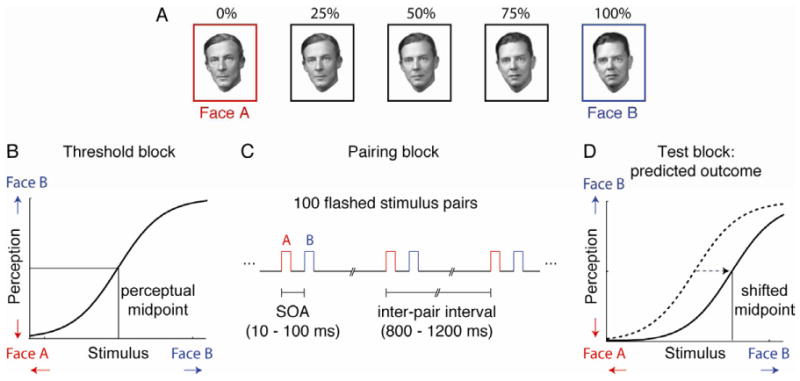Figure 1.

Stimuli and sequence of main task blocks. A. Example of a series of morphed face stimuli. Five morph levels are shown, out of a total of 101 (0% to 100%) used in the experiment. B. Threshold block. Psychometric functions were obtained using the method of constant stimuli (110 trials) to characterize the subjects' baseline perception of face identity for each set of morphed faces. The psychometric function was then used to determine the perceptual midpoint (i.e., the morph level that was equally likely to be perceived as Face A or Face B). C. Pairing block. The subjects fixated while 100 rapidly flashed stimulus pairs appeared on the screen. The stimulus onset asynchrony (10 to 100 ms) and pair order (either A-B or B-A) were held constant within a single session of the experiment. D. Test block. The psychometric function was again sampled around the perceptual midpoint (14 trials) to assess the impact of the stimulus pairing on the perception of face identity. If the timing of the flashed A-B pairing matched the permissive window for spike timing-dependent plasticity, the subject's perceptual midpoint was predicted to shift towards face B.
